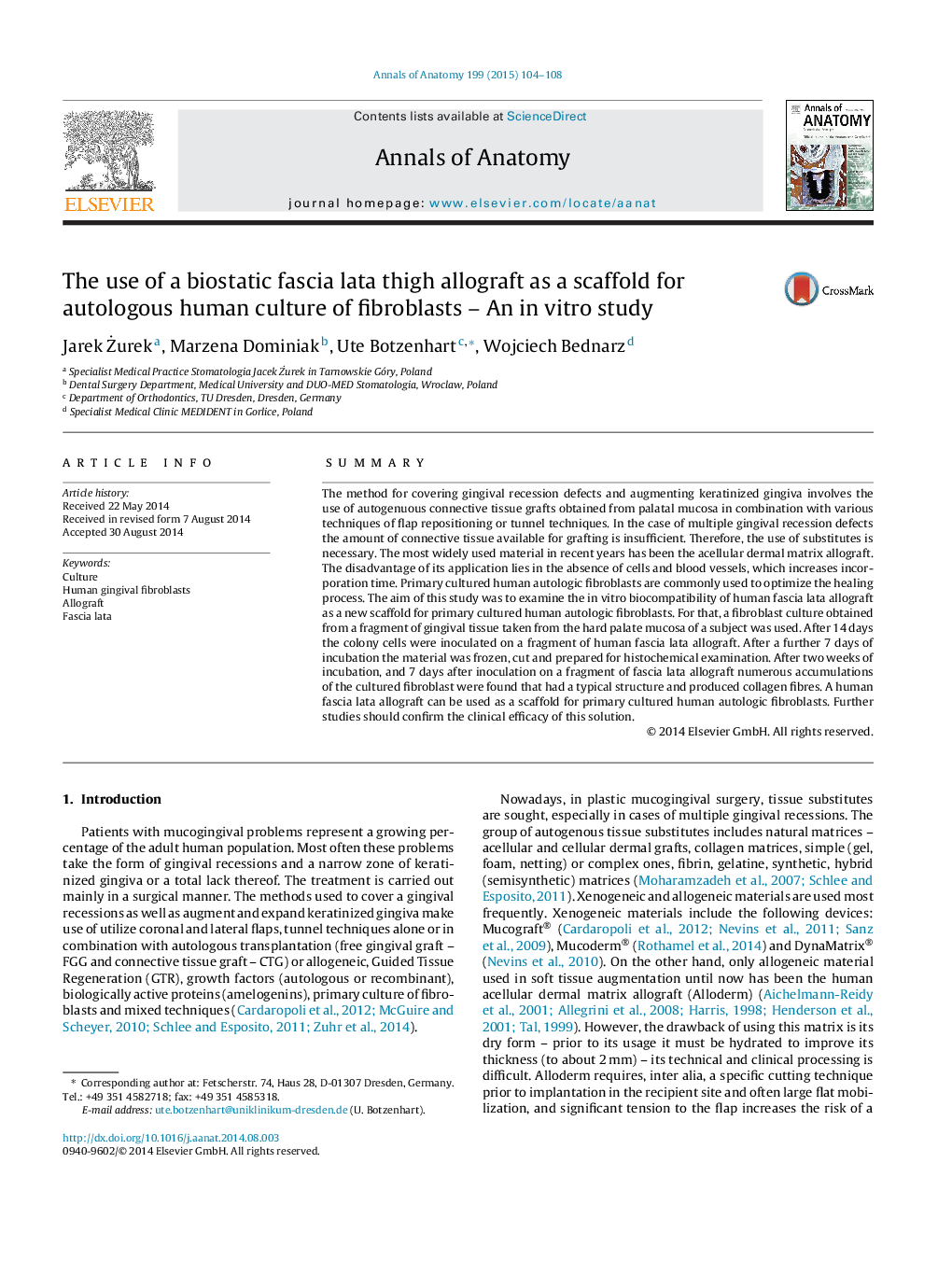| Article ID | Journal | Published Year | Pages | File Type |
|---|---|---|---|---|
| 8461004 | Annals of Anatomy - Anatomischer Anzeiger | 2015 | 5 Pages |
Abstract
The method for covering gingival recession defects and augmenting keratinized gingiva involves the use of autogenuous connective tissue grafts obtained from palatal mucosa in combination with various techniques of flap repositioning or tunnel techniques. In the case of multiple gingival recession defects the amount of connective tissue available for grafting is insufficient. Therefore, the use of substitutes is necessary. The most widely used material in recent years has been the acellular dermal matrix allograft. The disadvantage of its application lies in the absence of cells and blood vessels, which increases incorporation time. Primary cultured human autologic fibroblasts are commonly used to optimize the healing process. The aim of this study was to examine the in vitro biocompatibility of human fascia lata allograft as a new scaffold for primary cultured human autologic fibroblasts. For that, a fibroblast culture obtained from a fragment of gingival tissue taken from the hard palate mucosa of a subject was used. After 14 days the colony cells were inoculated on a fragment of human fascia lata allograft. After a further 7 days of incubation the material was frozen, cut and prepared for histochemical examination. After two weeks of incubation, and 7 days after inoculation on a fragment of fascia lata allograft numerous accumulations of the cultured fibroblast were found that had a typical structure and produced collagen fibres. A human fascia lata allograft can be used as a scaffold for primary cultured human autologic fibroblasts. Further studies should confirm the clinical efficacy of this solution.
Related Topics
Life Sciences
Biochemistry, Genetics and Molecular Biology
Cell Biology
Authors
Jarek Żurek, Marzena Dominiak, Ute Botzenhart, Wojciech Bednarz,
